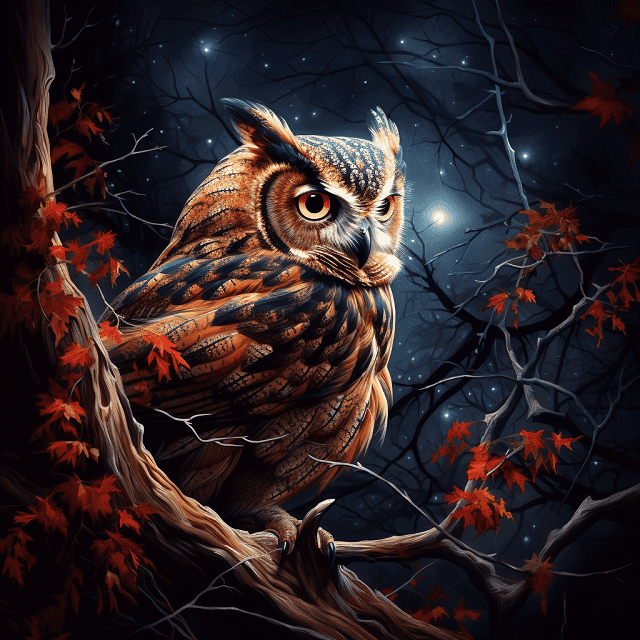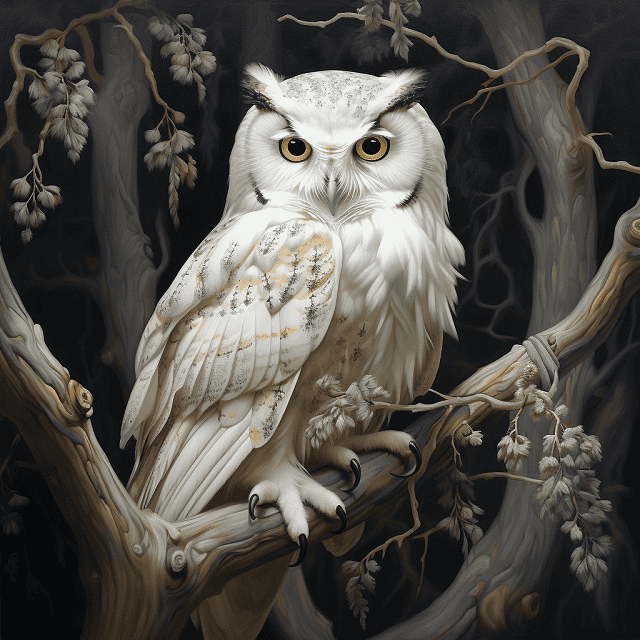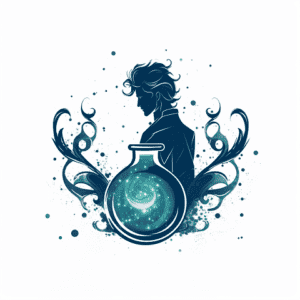Like a shadow in the night, owls often spark fear and fascination. You’ve probably heard tales of these mysterious birds being bad omens. But is there any truth to this? Let’s debunk the myth. Dive into the world of owls, explore their symbolism across cultures, their role in ancient mythology, and the science behind their nature. You’ll discover how these creatures have fluttered from being feared symbols of doom to respected emblems of wisdom.
Understanding the Symbolism of Owls in Different Cultures
You’ll find that the symbolism of owls varies greatly among different cultures, sometimes seen as harbingers of doom, while in others, they’re revered as symbols of wisdom. Let’s delve a bit deeper into these different interpretations.
In many Western cultures, you’ll find that owls represent wisdom and knowledge. This dates back to ancient Greece, where Athena, the goddess of wisdom, had an owl as her symbol. This nocturnal bird’s ability to see in the dark was taken as a metaphor for enlightened knowledge and wisdom.
However, if you were to travel to some parts of Africa or Asia, you’d hear a drastically different interpretation. There, owls are often associated with death and misfortune. For instance, in some African cultures, the hooting of an owl is perceived as an ill omen, predicting death in the community. In parts of India, spotting an owl near a house is considered a sign of impending doom.
In Native American cultures, owls are not so much feared as they’re respected. The owl, particularly the Great Horned Owl, is viewed as a powerful protector and a seer of spirits. They’re believed to have a strong connection with the spirit world, and their hoots are interpreted as messages from the beyond.
The Role of Owls in Ancient Mythology and Folklore
In ancient mythology and folklore, you’ll find that certain nocturnal birds, chiefly owls, have often been associated with a variety of superstitions and beliefs. Owls, with their striking appearance and haunting calls, have always stirred the human imagination.
Consider the following four examples:
- Ancient Greece: Here, the owl was sacred to Athena, the goddess of wisdom. It was seen as a symbol of good fortune and protection. The owl’s ability to see in the dark was associated with knowledge and foresight.
- Native American Cultures: Different tribes had differing views. Some saw the owl as a harbinger of death, while others, like the Hopi, believed it was a protective spirit.
- Celtic Mythology: Owls were seen as an omen of death and destruction. They were associated with the underworld and were believed to transport the souls of the departed.
- Japanese Folklore: The owl, or ‘Fukurou’, symbolized luck and protection from suffering. Some species, like the barn owl, were thought to bring fortune, while others foretold disaster.
But remember, these are all cultural interpretations and do not reflect the behavior or nature of owls. Owls are in reality, remarkable creatures, equipped with exceptional hunting skills and a critical role in maintaining a balanced ecosystem. They’re not supernatural entities, nor do they bring luck or foretell the future. They’re simply birds, leading lives dictated by their instincts and environment. As you delve into their world, you’ll appreciate their true role far beyond ancient myths and superstitions.

Modern Superstitions and Beliefs About Owls
Despite the scientific understanding we have today, you can’t ignore that modern superstitions and beliefs about these nocturnal birds still persist in many cultures. You might wonder why owls, specifically, have become such a fixture in folklore. It’s largely because of their unique behaviors and characteristics.
You see, owls are distinct among birds. They’re known for their nocturnal habits, their silent flight, and their piercing gaze. This sets them apart from other birds and contributes to their reputation as mysterious and otherworldly creatures. Different cultures interpret these traits in various ways. In some, owls are seen as symbols of wisdom and protection. In others, they’re considered bad omens or harbingers of death.
For instance, in Western cultures, you’ll often find owls associated with wisdom, largely due to their symbolic role in Greek mythology. You perhaps remember the owl that accompanied Athena, the goddess of wisdom. But in other cultures, such as some Native American tribes, owls are considered messengers of death or misfortune. In these communities, seeing or hearing an owl can be seen as a warning or a bad omen.
However, it’s important to remember that these are just beliefs and superstitions. They don’t reflect the true nature of owls. In reality, owls are an important part of our ecosystem. They play a crucial role in controlling rodent populations, and their diverse species range from the tiny Elf Owl to the large Great Gray Owl. Regardless of the folklore, owls are fascinating creatures worthy of our respect and protection.
Scientific Perspective: Examining the Nature of Owls
Shifting away from the realm of folklore and superstition, let’s delve into the scientific perspective, where you’ll get a clearer understanding of these nocturnal creatures’ true nature. Owls, despite the mystique surrounding them, are simply birds of prey with unique adaptations that help them survive and thrive in their respective habitats.
- Nocturnal Hunting: Owls are primarily nocturnal hunters. Their extraordinary night vision and ability to fly silently make them efficient predators in the dark. They’re not symbols of death or doom, they’re just doing what they must to survive.
- Physical Adaptations: Owls’ distinctive features aren’t there to intimidate or foretell disaster. Their large eyes provide excellent night vision, while their facial disc (the circle of feathers around their eyes and ears) helps direct sound to their ears for pinpoint audio accuracy.
- Diet and Predation: Owls consume a variety of small animals, including rodents, insects, and other birds. This diet control pests that could otherwise overwhelm ecosystems. So rather than being harbingers of misfortune, owls are vital for maintaining ecological balance.
- Vocalization: The eerie hoots and screeches you hear at night serve a purpose. They’re not ominous warnings or signals of impending doom. Instead, they’re communication tools, used for everything from attracting mates to declaring territory.
Owls in Popular Media: Reinforcing or Debunking the Myth
You’ve probably seen a fair share of our feathered friends in movies and literature, but have you ever wondered how these portrayals contribute to or challenge long-standing myths? Take owls, for instance. In many cultures, they’re considered symbols of wisdom, while in others, they’re seen as omens of death. These contradictory views are often reflected in popular media.
In Western media, owls are generally depicted as wise creatures. You’ll remember the sagacious owl in A.A. Milne’s “Winnie the Pooh,” or the mystical Hedwig in J.K. Rowling’s “Harry Potter” series. These representations reinforce the positive associations with owls, highlighting their keen senses and intuitive nature.
On the other hand, you’ve got films like “The Fourth Kind,” where the owl is a chilling symbol of an impending alien abduction, or even “Twin Peaks,” where “the owls are not what they seem.” These portrayals tap into the darker, more sinister interpretations of owls, reinforcing the belief in some cultures that they’re harbingers of doom.
Changing Perceptions: Owls as Symbols of Wisdom and Protection
So, you’ve journeyed with us through the portrayal of owls in popular media. You’ve seen the myths, the superstitions, and the fear. Now, you’re ready to shift gears and take a fresh look at these fascinating creatures. Let’s explore how owls, despite their spooky reputation, are also viewed as symbols of wisdom and protection.
- Wisdom: The association of owls with wisdom is ancient and widespread. In Greek mythology, the owl is the symbol of Athena, the goddess of wisdom. It’s not just about their “wise” appearance either. Owls’ sharp senses and keen hunting skills painted them as wise and knowledgeable in the eyes of our ancestors.
- Protection: In many cultures, owls are seen as protectors. Native American tribes often view the owl as a guardian against evil spirits. Their nocturnal nature and ability to see in the dark lend them an air of mystery and power, making them perfect symbols of spiritual protection.
- Transition: Owls are also symbols of transition and change. This might be due to their connection with the night – a time of ending and beginning. For many, seeing an owl signifies that a change is coming.
- Silent Strength: Owls don’t sing like other birds. Their silence, coupled with their power and precision as predators, represents a quiet, steadfast strength.
As you see, perceptions of owls are changing. They’re no longer just symbols of doom and gloom but also of wisdom, protection, and strength. So next time you hear the hoot of an owl, don’t shudder in fear. Instead, marvel at the rich symbolism this magnificent bird carries.

Frequently Asked Questions
What Are the Specific Behaviors of Owls That Might Make People Believe They Are Bad Omens?
You might wonder why owls are sometimes considered bad omens. This belief often stems from their nocturnal habits, silent flight, and eerie calls, which can be unsettling in the still of the night. Additionally, their fierce hunting skills and glowing eyes add to their mysterious aura. It’s important to remember, though, that these behaviors are normal for owls and don’t indicate anything ominous. They’re simply part of their nature as birds of prey.
How Do Owls Interact With Other Animals and What Impact Does This Have on Their Reputation?
You’re asking about owl interactions with other animals. Owls, being predators, often instigate fear among smaller creatures. They’re skilled hunters, swooping silently to catch unsuspecting prey. This behavior can make them seem ominous, but it’s just part of their survival strategy. Their reputation as bad omens likely stems from this, along with their nocturnal habits, rather than any malicious intent. Remember, they play a vital role in controlling rodent populations, contributing to overall ecosystem health.
Does the Size or Species of the Owl Affect the Type of Omen It Is Perceived to Be?
In folklore, the owl’s size or species doesn’t generally affect how it’s perceived as an omen. Your view of an owl as a bad omen depends more on cultural beliefs than the owl’s specifics. From a scientific standpoint, an owl’s species and size determine its behavior and role in the ecosystem, not its symbolic meaning. So, don’t let superstitions sway you, each owl species has its unique characteristics to appreciate.
What Is the Origin of the Belief That Seeing an Owl in Daylight Is a Bad Omen?
You’re curious about why seeing an owl in daylight might spell doom, aren’t you? Well, it’s an ancient superstition. Many cultures, including some Native American tribes, believed that owls were harbingers of death. Their nocturnal habits and eerie calls made them symbols of the unknown, and seeing them during daylight was considered unnatural and ominous. So, it’s not about the bird itself, but the fear of what’s unfamiliar and unexplained.
Are There Any Common Misconceptions About Owls That Could Be Contributing to Their Portrayal as Bad Omens?
Yes, there are several misconceptions about owls that contribute to their portrayal as bad omens. For instance, you might’ve heard that owls are harbingers of death. This is largely due to their nocturnal nature and eerie calls. However, in reality, owls are simply predators with excellent night vision and hearing, not mystical creatures with foreboding intentions. They’re important for controlling rodent populations. So, don’t let superstitions cloud your view of these fascinating birds.
Conclusion
So, are owls bad omens? Not necessarily. Owls are unique creatures, full of mystery and intrigue, often cloaked in the darkness of night. But remember, they’re not harbingers of doom. They’re just birds, living their lives. It’s our stories, myths, and superstitions that have painted them as ominous figures. So next time you hear an owl’s hoot, don’t think of it as a death knell, but rather a melody in the symphony of nature.

